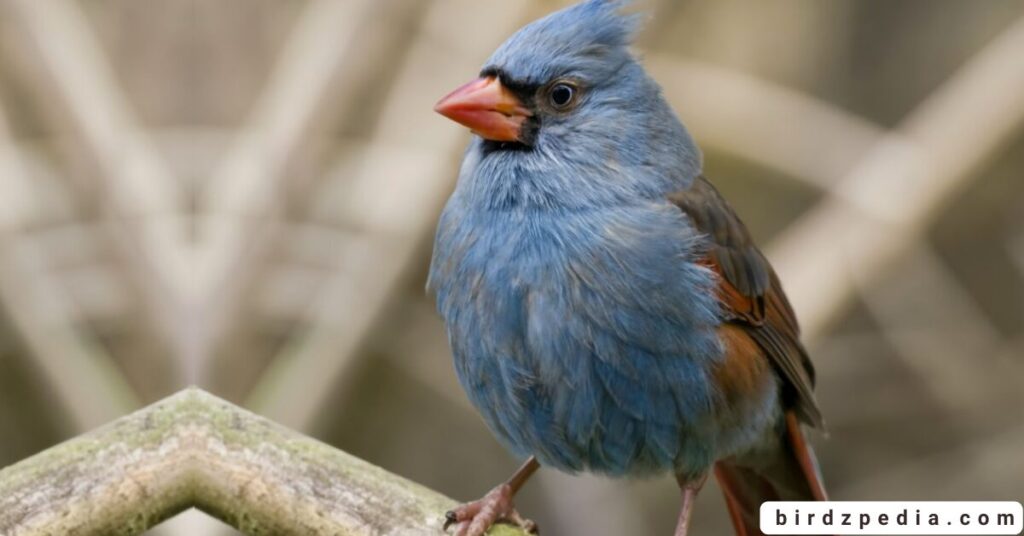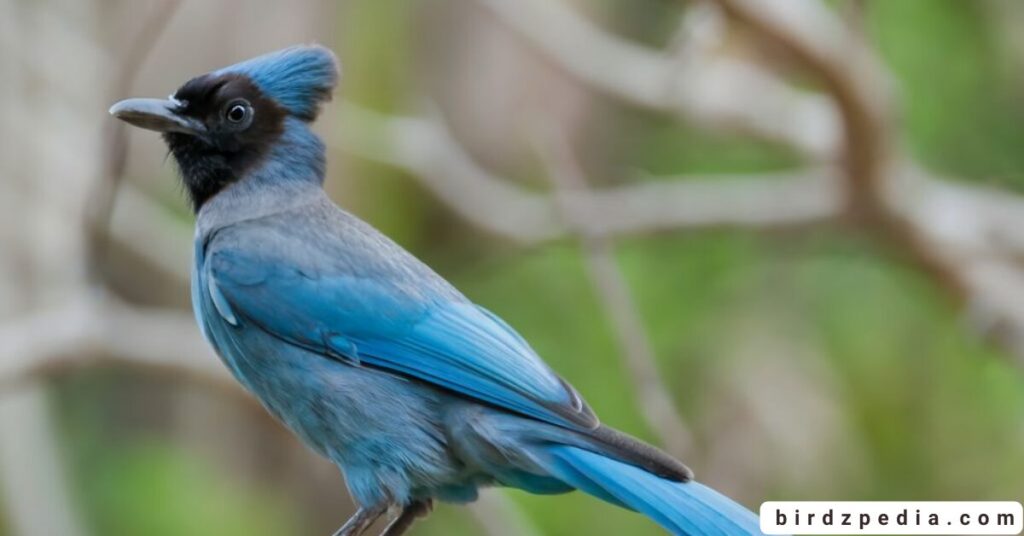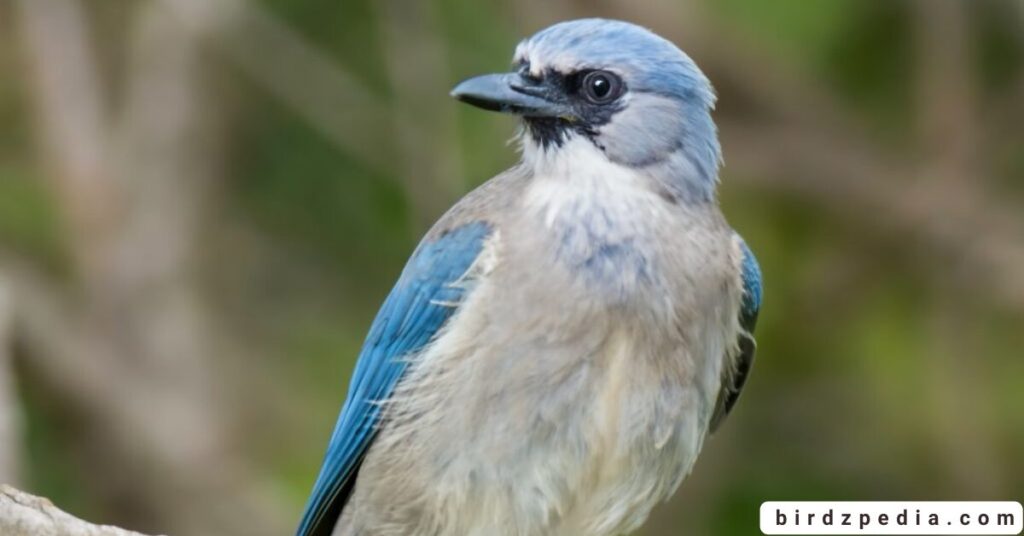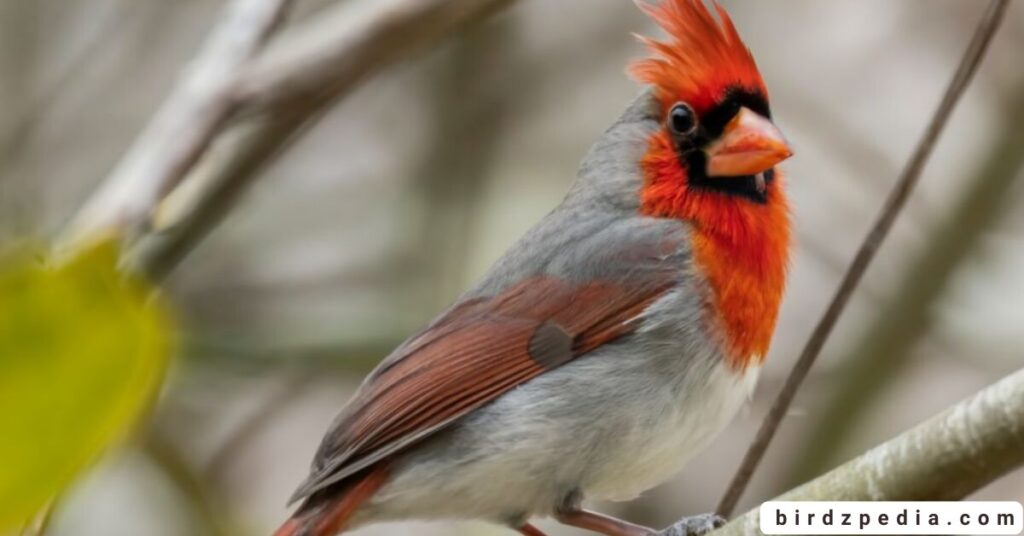Are Blue Cardinals an Illusion or a True Story?
Blue Cardinals
Some people fervently believe they have spotted stunning blue cardinals in their backyards or on hiking trails in specific parts of the country. It’s likely that you haven’t heard of anything like that. So how is this possible? It appears plausible. Why not? There are other blue-colored birds. And might there not be a bird species or family among the many that you are unfamiliar with?
Sadly, the reports of birdwatchers all around America seeing a stunning blue cardinal are mostly folklore. You have probably heard tales of sightings like this. The truth is that while there is no such bird as an actual blue cardinal, people often misidentify other species of birds due to their crest, size, and close
appearance to the northern cardinal (Cardinalis cardinalis). Over the course of my more than 20 years of backyard birdwatching, I have never seen one of these mysterious birds. Why? Because I can readily distinguish northern cardinals from other blue-colored birds that resemble them, having seen hundreds
or perhaps thousands of them in my garden. You will soon as well. I’ll explain in this essay why there aren’t any real blue cardinals and how some other bird species are sometimes confused with the notorious northern cardinal.
What are Cardinals?
The most common kind of cardinals are native to North America and are known as Northern Cardinals. Across eastern and central North America, they can be observed at bird feeders. They have a bright red pointed beak and very noticeable mohawks on top of their heads. They devour berries, fruits, seeds, and
tiny insects with their beak! Their vivid red feathers add to their beauty, which is why they are a popular bird. Because these birds are so well-known, ornithologists have spent countless years studying them and have a thorough understanding of them. Alright, enough with the history of the cardinals! Now let’s
discuss the true purpose of your visit. You must be here because, if you’re like me, you were wondering if that blue cardinal you thought you saw was indeed there. What hues are cardinals, then? I will keep this quick because I have discussed it in my essay on cardinal kinds.

Different Color Cardinals
| Color | Cardinal Species | Distribution |
|---|---|---|
| Red | Northern Cardinal | Eastern side of North America: Canada, US, parts of Mexico |
| Yellow | Northern Cardinal (Rare variant) | Same characteristics as red cardinal, but yellow in color |
| Gray | Pyrrhuloxia or Desert Cardinal | Further south into Mexico and Central America, desert climate |
| White | Northern Cardinal (Rare variant) | Abnormality in pigments, can appear white or drained of color |
Do Blue Cardinals Actually Exist, Despite The Rumor?
No, there aren’t any blue cardinals. The presence of a blue cardinal is not supported by scientific data. It’s not as thrilling as you might anticipate to learn the truth about this bird. Actually, it’s an instance of mistaken identity. In reality, observers of this enigmatic bird were observing a distinct species of bird that shares characteristics with the northern cardinal.
Causes of the Mistaken Identity
There are several grounds to believe that you have spotted a blue cardinal.
- Some birds are blue in color and have a crest like a red cardinal’s.
- The beaks of other species are formed similarly.
- Due to their similar size and form, these bird species are sometimes mistaken for cardinals.
- Occasionally, artificial or natural lighting can fool our eyes into thinking a red cardinal is blue.
- Similar facial markings may also be present in other birds.
- The other species, such as the northern cardinal, are frequent garden visitors.
The Crown Is Similar To The Cardinal
Unmistakably, cardinals have a triangle-shaped crown that frequently protrudes from their heads. This unique crown is also present in the mistaken bird.
The Body Shape & Size Is Similar To The Cardinal
The bodies of northern cardinals are round, fat, and have long tails. They also have broad necks and small wings. There is confusion because the other bird species are similar in size and shape.
The Beak Is Similar To The Cardinal
A broad, stubby, triangle-shaped beak distinguishes northern cardinals from many other backyard visits. Additionally, the form and size of the misidentified bird’s beak are similar, which makes it simple to mistake them for northern cardinals.
Typical Backyard Guests Such as The Cardinal
Often spotted perched on bird feeders or soaring around in search of food, northern cardinals are a familiar sight in backyards. Due to their similar habits, the other bird species can be mistaken for the northern cardinal.

Instead of What You most Likely Saw?
People often confuse one blue bird for another since many birds have similar appearances. Or one blue bird for a nonexistent one, as the case may be. These are the birds that people in the US often confuse for the fabled blue cardinal.
Blue Grosbeak (Passerina caerulea)
Blue grosbeaks are medium-sized songbirds that are occasionally confused for blue cardinals. However, they are related to cardinals. Unfortunately, they belong to a different species. Their head crests are smaller, but they do have big beaks that can split seeds, just like cardinals, and small black eye masks. Occasionally, their wing bars seem crimson from the corner of their eye.
Blue Grosbeak & Northern Cardinal
| Feature | Similarities | Differences |
|---|---|---|
| Crown | Cardinals and blue grosbeaks both have a triangular crown that frequently protrudes from their heads. | The cardinal has a crown, whereas the blue grosbeak does not. |
| Beak | The beaks of both cardinals and blue grosbeaks are triangle-shaped, robust, and stubby. | The cardinal’s bill does not curl downward like the blue grosbeak’s does. |
| Body | The length of both birds is around 8′′. | The bodies of cardinals are plumper and rounder. |
| Backyard Visitor | Blue grosbeaks are uncommon backyard visitors, whereas cardinals are a typical sight. |

Blue Jay (Cyanocitta)
Perhaps the most often mistaken bird for a cardinal is the blue jay. They are similar in shape but have a little larger body. These stunning birds also have a big crown on their heads. Although they are unrelated, both species adore backyard feeders.
Blue Jay& Northern Cardinal
| Feature | Similarities | Differences |
|---|---|---|
| Crown | Cardinals and blue jays both have a triangular crown that frequently protrudes from their heads. | |
| Backyard Visitor | These birds frequently visit backyards. | |
| Beak | •Cardinals have a thick, stubby, triangle-shaped beak, while blue jays have a thin, mid-length, sharp beak. | |
| Body | The bodies of cardinals and blue jays are big and plump, with long tails and short wings. | There is a 1–3′′ difference in size between blue jays and cardinals. Cardinals are roughly 8 1/2′′ long, and blue jays are 9–12′′ long. In addition, blue jays’ bodies are stockier than cardinals’. |

Indigo Bunting (Passerina cyanea)
Along hiking routes, the indigo bunting, another entertaining species, can be mistaken for a blue cardinal. Its shimmering blue wings and body are visible. The stunning bird also has a spherical, plump body and a triangular crest on top of its head. However, compared to cardinals, their beaks are shorter, thinner, and sharper. They are a few inches smaller, though, and seldom make it to backyards for a feast.
Indigo Bunting & Northern Cardinal
| Feature | Similarities | Differences |
|---|---|---|
| Crown | Cardinals and indigo buntings both have a triangular crown that frequently protrudes from their heads. | |
| Beak | Cardinals have thick, stubby, triangle-shaped beaks, but Indigo buntings have short, thin, pointy beaks. | |
| Body | The bodies of cardinals and indigo buntings are fat and round. Furthermore, both birds have a little forward lean to their stance. | Cardinals are larger than indigo buntings. Cardinals are roughly 8.5 inches long, and indigo buntings are about 5 inches long. |
| Backyard Visitor | Indigo buntings are uncommon, while cardinals are frequent backyard visitors. |

Tufted Titmouse (Baeolophus bicolor)
The tufted titmouse is a little songbird whose gray hue is sometimes mistaken for blue. This unintentional identification is further aided by the black forehead and head crest. They live in the eastern part of the United States and visit birdfeeders.
Tufted Titmouse & Northern Cardinal
| Feature | Similarities | Differences |
|---|---|---|
| Crown | Cardinals and buffed titmice have crowns that frequently protrude from their heads. | The crowns of tufted titmice are thinner and smaller. The crowns of cardinals are thicker and bigger. |
| Beak | Beaks of tufted titmice are slender and sharp. The beaks of cardinals are triangular in form and thick. | |
| Body | The bodies of cardinals and tufted titmice are round and fat. | Tufted titmice are approximately 2.5 inches smaller than cardinals. Cardinals are roughly 8.5 inches long, and tufted titmice are around 6 inches long. Compared to cardinals that lean forward, tufted titmice have a more upright stance. |
| Backyard Visitor | Tufted titmice are uncommon backyard visitors, although cardinals are a typical sight. |

Less Frequently, But Still Bird Mistook For Blue Cardinals
Stellar’s Jay (Cyanocitta stelleri)
A gorgeous bird with a thick, tall crown on its head, the Stellar’s Jay, could be a good candidate for mistaken identification. The eastern half of the United States is home to cardinals, whereas the western section is home to Stellar Jays.
Nevertheless, many may glimpse these beauties and believe they could be blue cardinals. Cardinals are rounder and plumper than Stellar’s jays, which have long, thin beaks and slim bodies. However, both birds like using backyard feeders.
Stellar’s Jay & Northern Cardinal
| Feature | Similarities | Differences |
|---|---|---|
| Crown | The towering, broad crowns of the cardinal and Stellar’s jay are similar. | |
| Beak | Stellar’s jays have longer, thinner beaks than cardinals, which are small, stubby, and fashioned like a triangle. | |
| Body | Cardinals have round, fat bodies and forward-leaning attitudes, while Stellar’s Jays have slim bodies and upright postures. Cardinals are smaller than Stellar’s jays, by about 3.5 inches. | |
| Backyard Visitor | Within their respective geographic ranges—the cardinals in the east and the stars on the west coast of the United States, respectively—both the cardinal and the Stellar’s jay are frequent garden birds. | Florida scrub jays are uncommon, probably because they prefer a scrub habitat, while cardinals are frequent backyard visits. |

Desert Cardinal (Pyrrhuloxia)
Pyrrhuloxia, also called the desert cardinal, is a medium-sized crested bird. They are available in gray tones that resemble blue. The female northern cardinal may also be referenced by their crimson highlights. These birds are found in the southwestern regions of the United States and Mexico, where their habitat needs are met by deserts.
Although they belong to the same family, these birds are not the same species. However, there are a few parallels between northern and desert cardinals. In addition to the terrain and gray coloring, differences include slimmer bodies and a beak that is slightly tipped downward.
Desert Cardinal & Northern Cardinal
| Feature | Similarities | Differences |
|---|---|---|
| Crown | Cardinals and pyrrhuloxia both have crowns that frequently protrude from their heads. | Cardinals have larger, thicker crowns than pyrrhuloxias, which have smaller, thinner crowns. |
| Beak | Cardinals and pyrrhuloxia have thick, stubby beaks that are fashioned like triangles. | Pyrrhuloxias has a slightly tipped beak. |
| Body | Cardinals and pyrrhuloxia are both roughly 8 inches long. The tails and wings of these birds are almost the same. | The posture of pyrrhuloxias is more upright than that of the forward-leaning cardinal. Pyrrhuloxias have somewhat slimmer bodies, while cardinals have rounder, plumper bodies. |
| Backyard Visitor | While pyrrhuloxias are uncommon, especially given their limited range (Arizona, New Mexico, Texas, Mexico), cardinals are frequent backyard visits. |

Florida Scrub Jay (Aphelocoma coerulescens)
The Florida scrub jay is the last North American bird that could be fooled for a blue cardinal. Even though these lovely birds lack crowns, they resemble cardinals nonetheless. The shapes of their bodies are similar, and both species have comparable ways of holding themselves.
However, Florida scrub jays have long, narrow beaks and are considerably smaller than cardinals. Even though they occasionally show up at backyard feeders, scrub jays are also not very popular there.
Florida Scrub Jay & Northern Cardinal
| Feature | Similarities | Differences |
|---|---|---|
| Crown | The Florida scrub jays lack a crown, but the Cardinals do. | |
| Beak | Florida scrub jays have longer, thinner beaks than cardinals, which have short, stubby, triangle-shaped beaks. | |
| Body | Both cardinals and Florida scrub jays have round, chubby bodies and a forward-leaning gait. | Compared to cardinals, Florida scrub jays are approximately 2 inches smaller and have longer wings and tails. |
| Backyard Visitor | Florida scrub jays are uncommon, probably because they prefer a scrub habitat, while cardinals are frequent backyard visits. |

Red-Crested Cardinal
The red-crested cardinal (Paroaria coronata), which is native to South America, only has blue on its upper back and wings. However, there is another type of bird that is sometimes confused for a blue-colored cardinal. Given their apparent similarity, one may assume that the red-crested cardinal is a particular kind of cardinal, however this is untrue. The genus of red-crested cardinals is entirely distinct.
Red-Crested Cardinal & Northern Cardinal
| Feature | Similarities | Differences |
|---|---|---|
| Crown | The tall, thick crowns of the cardinal and the red-crested cardinal are similar. | |
| Beak | Both the cardinal and the red-crested cardinal have short, stubby beaks that resemble triangles, but the red-crested cardinal’s beak resembles an obtuse triangle more. | |
| Body | Both northern and red-crested cardinals have round, fat bodies and forward-leaning attitudes; however, the northern cardinal’s body is slightly plumper. | The size difference between red-crested and northern cardinals is around 1 inch. |
| Backyard Visitor | Within their different ranges—the red-crested cardinal inhabiting South America, Hawaii, and Puerto Rico, for example—both the northern and red-crested cardinals are frequent garden birds. In the eastern United States, northern cardinals. |

It may Surprise you to learn that Blue-colored birds are not truly blue
The illumination makes them appear to be blue in color. This is due to the fact that certain birds have bluer-colored feathers than others because of differences in how they reflect light.
Blue Cardinal Symbolism and Meaning
- Rarity Cardinals in blue are symbolic of mystery, rarity, and distinctiveness. They stand out due to their distinctive colors.
- Calmness The blue hues stand for peace, tranquility, ease, and contentment.
- Clarity The color blue is linked to purity, cleanliness, and clarity. A clearer vision is reflected by the blue cardinal.
- Heaven The skies, the heavens, and the spiritual world are represented by the color blue. Cardinals in blue can stand for communications from above.
- Royalty Cardinals were referred to as the “princes” of the church during the Middle Ages. Their imposing red robes were a sign of noble status. An exotic royalty can be symbolized by the blue cardinal.
- Guidance Cardinals were seen as spiritual mentors who could point you in the correct direction. A blue one could be an especially effective guide.
- Renewal Cardinals represent regeneration and renewal that follow adversity in certain civilizations. This idea is emphasized by a blue cardinal.
- Curiosity The blue cardinal serves as a reminder to live with a sense of childish presence and wonder. Their hue arouses curiosity.
- Courage This uncommon bird’s vivid coloration symbolizes boldness, bravery, and fortitude.
- Hope The vivid color blue represents hope, possibility, and optimism.
- Stillness Cardinals in blue serve as a gentle reminder to meditate, relax, and be still.
- Vision The color blue is a symbol for intuition, creativity, and inner vision. Cardinals in blue represent opening these presents.
Summary
This is a great question! A lot of people have claimed to have seen blue cardinals, but unless someone painted one, it had to have been another bird! which, for the sake of the cardinal, I pray did not occur. You won’t be able to locate a blue cardinal in the wild, despite the fact that it’s a gorgeous concept that makes for entertaining contemplation!
FAQs
- Are blue cardinals a real species?
- There is no separate species of cardinal save the blue cardinal. The primary characteristic of the Northern Cardinal (Cardinalis cardinalis) is its red plumage, though blue-plumed birds are sometimes occasionally seen. Due of hereditary abnormalities, these blue cardinals are uncommon variations.
- What causes the blue coloration in cardinals?
- A genetic mutation that modifies the generation of pigments responsible for the bird’s coloration is the cause of blue cardinals. In particular, light dispersion from a structural flaw in the bird’s feathers might give it a blue appearance rather than its usual red one.
- Where can blue cardinals be found?
- Due to their uncommon genetic makeup, blue cardinals may be found throughout the usual range of northern cardinals, which is mostly in eastern North America, with portions of Canada, the United States, and even Mexico included.
- Do blue cardinals behave differently from red cardinals? Behaviorally, blue cardinals are similar to their red counterparts. They have the same habitat preferences, diet, and social behaviors. The only notable difference is their plumage color.
- How can I attract blue cardinals to my backyard?
- Because blue cardinals are rare, it can be difficult to get them to visit your backyard. Creating a suitable habitat with trees, shrubs, and bird feeders filled with food and seeds can make it more likely that any Northern Cardinal, including blue variations, will be attracted. Sightings of blue people are uncommon and erratic, nevertheless.
- Are Female Cardinals Blue?
- No, the crest, wings, and tail of female northern cardinals are covered with buffy-brown feathers with red highlights. Her beak is a vibrant orange color, and she is wearing a charcoal mask around her face.




![Exploring The Neotropic cormorant[Nannopterum brasilianum]](https://birdzpedia.com/wp-content/uploads/2024/01/Neotropical-cormorant-768x402.jpg)
![Red-Billed Choughs[Pyrrhocorax pyrrhocorax]: Flight, Sounds, Conservation, and More](https://birdzpedia.com/wp-content/uploads/2023/12/Red-billed-cough-768x402.png)
![Verreaux’s Eagle [Aquila verreauxii] Overview, Habitat, Sounds](https://birdzpedia.com/wp-content/uploads/2023/12/Black-Oystercatcher-768x402.png)
![Embracing Wildlife keel-billed Toucan:[Ramphastos sulfuratus]](https://birdzpedia.com/wp-content/uploads/2024/01/Keel-Billed-Toucan-768x402.png)